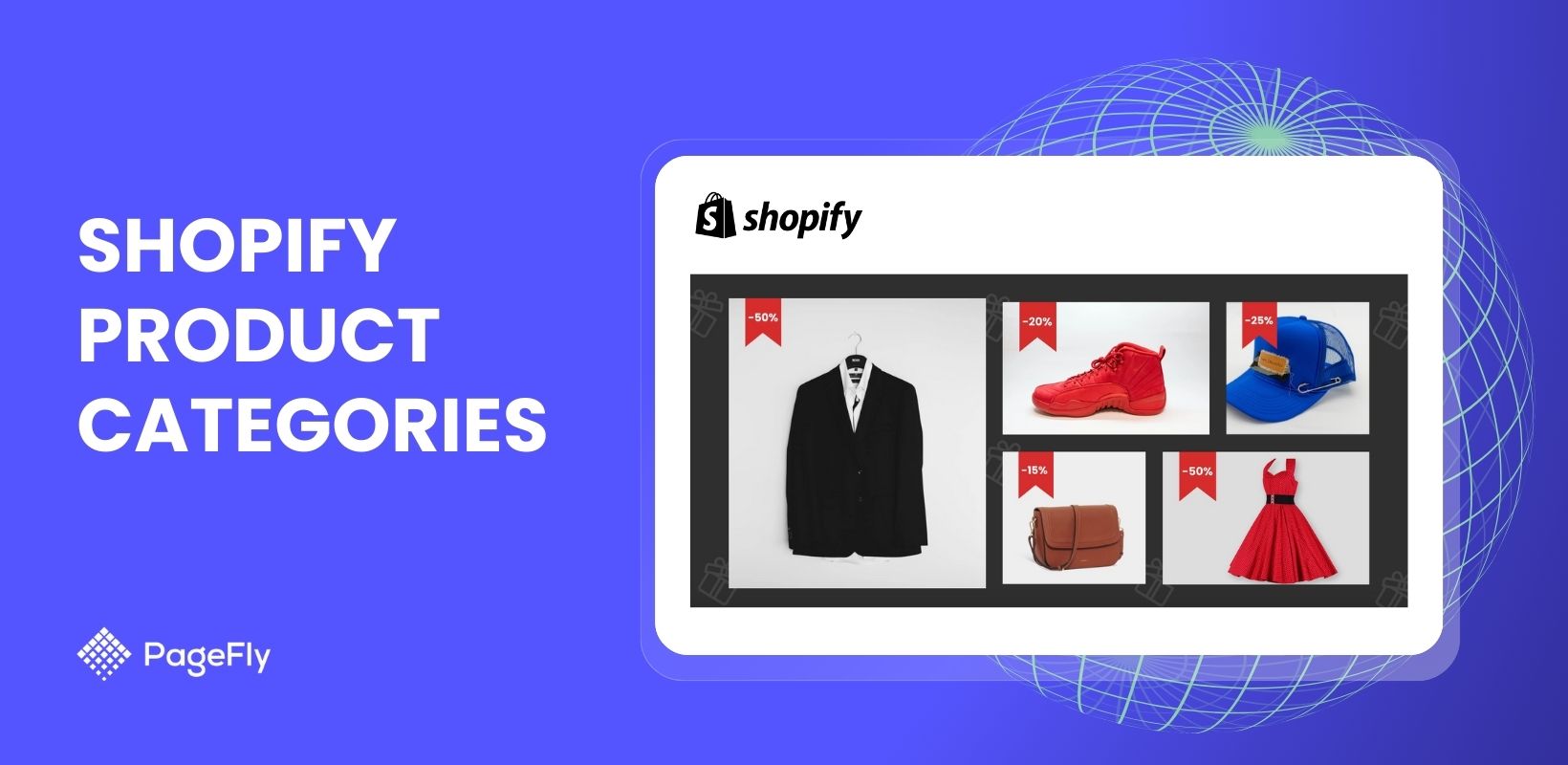Organizing your Shopify product categories effectively is crucial to driving sales, improving user experience, and enhancing your store’s search engine optimization (SEO).
Clear product categories enhance user experience by allowing visitors to navigate your website intuitively, making it easier for them to find what they're looking for. This organized structure reduces frustration and encourages exploration, ultimately guiding users to make purchases. Well-optimized categories make it easier for search engines like Google to understand and rank your website, helping potential customers find your products. In 2024, optimizing categories by using relevant keywords, clear titles, and rich meta descriptions is a crucial aspect of a comprehensive SEO strategy.
By prioritizing user experience and search engine visibility, well-organized categories can be a key asset for your Shopify store’s growth. This article will provide insights into the importance of effectively organizing product categories and demonstrate how a structured system can drive sales by improving navigation and helping customers find products easily.
How to Set Up Shopify Product Category
A Shopify Product Category (also referred to as a collection in Shopify) is a way to group similar products together, making it easier for customers to navigate your store and find what they need. This section serves as a Shopify guide to creating effective product categories that enhance navigation and organization.
Start with broad categories like “Clothing” and break them down into specific subcategories such as “Men’s T-Shirts” and “Women’s Dresses.” From our report, many Shopify merchants using our latest theme - the Shopify Blum theme find that a clear hierarchical structure improves both the shopping experience and inventory organization. By creating clear and intuitive categories, you enhance the shopping experience, leading to improved customer satisfaction and potentially driving higher sales.

Source: Shopify
To get started with creating your collections in Shopify, follow these steps:
- Log in to Shopify Admin: Go to your Shopify admin dashboard and navigate to the "Products" section.
- Click on Collections: From the "Products" dropdown menu, select "Collections."
- Create a Collection: You will have the option to create a new collection by clicking "Create collection."
- Add a Collection Title: Choose a name that clearly represents the group of products (e.g., "Men’s Shoes").
- Select Collection Type: Shopify offers two types of collections:
- Manual: Manually add products to the collection.
- Automated: Set conditions (e.g., tag-based rules) for products to automatically be added to the collection.
- Set Conditions: If you choose an automated collection, define the rules for which products should appear in the collection (e.g., products tagged as "shoes").
- Save: Hit "Save" to finalize the collection.
Once you have your categories set up, you can showcase these collections on your store’s navigation bar to help customers easily locate what they are looking for.
How to Manage Product Categories in Shopify
Managing categories in Shopify is essential for creating an organized and engaging shopping experience. To understand how does Shopify work in terms of managing product groupings, this step-by-step guide will help you keep your collections updated and relevant, ensuring they align with changing customer demands, new inventory, and seasonal offerings.

Source: Shopify
Step 1: Log in and Access Collections
- Log in to your Shopify admin dashboard.
- Navigate to the left sidebar.
- Click on "Products."
- Select "Collections" from the dropdown menu.
Step 4: Review Your Collections
Action: Regularly review your existing collections to ensure they are up-to-date.
Step 5: Organize and Update Categories
Action:
- Edit and rearrange collections based on current trends and customer feedback.

Step 6: Use Descriptive Titles
Action: Ensure each category has a clear and descriptive title. Avoid jargon and choose names that accurately reflect the products within.
Step 7: Group Similar Products
Action: Make sure each category contains related items. For example, in a beauty store, the “Skincare” category should feature moisturizers, cleansers, and serums together.

Source: Shopify
Step 8: Maintain Your Category Lists
Action: Regularly update your category lists as your product inventory evolves to ensure relevance and organization.
[Bonus] Managing and Updating Shopify Category Lists
Effectively managing your Shopify category lists is essential as your product inventory changes. While Shopify doesn't have traditional categories, you can create collections to organize products efficiently.

Source: Unsplash
A report by Invesp (source: invespcro.com) revealed that well-structured product categorization can improve the average order value (AOV) by up to 14%. This increase occurs because customers are more likely to discover related or complementary products during their shopping experience.
Here are some key practices to optimize your category management:
- Regular Audits: Conduct routine audits to identify outdated categories and misplaced products, ensuring your collections remain relevant.
- Leverage Customer Data: Use Shopify analytics to understand customer interactions with collections. This data can help refine categories based on what sells best.
- Seasonal Adjustments: Create seasonal collections (e.g., "Winter Essentials") to capitalize on trends and holidays.
- Efficient Techniques:
- Bulk Editing: Use Shopify’s bulk editor to update multiple products quickly, ideal for seasonal changes or promotions.
- Product Tagging: Tags allow products to belong to multiple collections, enhancing navigation and improving the shopping experience.
- Search Filters: Implement search filters to help customers narrow down options by criteria like price, size, and color, making their shopping journey more efficient.
- Handling Changes: When moving products between categories, follow these best practices:
- Communicate Changes: Inform customers about significant category updates through emails or site banners.
- Redirect URLs: Use 301 redirects for any changed or deleted category URLs to avoid 404 errors.
- Avoid Drastic Changes: Make incremental adjustments to minimize confusion for returning customers.
5 Effective Organizing Shopify Product Categories Strategies
A well-organized Shopify store is easy to navigate, increasing customer satisfaction and improving sales. Shopify stores often operate within specific product categories, and focusing on a niche can yield better sales opportunities and profitability compared to more saturated markets. Let’s break down five strategies that can help you organize your categories effectively.

Source: Unsplash
Define Clear and Logical Categories
Establishing clear and logical categories is the foundation of an organized Shopify store. For those looking to set up Shopify store categories efficiently, ensure they reflect the nature of the products and resonate with customer expectations.
Instead of broad, generic terms, opt for specific categories that provide clarity. For instance, instead of labeling a category simply as "Clothing," consider more descriptive terms like "Men’s Activewear" or "Women’s Formal Wear." This specificity not only improves navigation but also aligns better with search queries, enhancing SEO.
Utilize Subcategories
Incorporating subcategories allows for more detailed organization, helping customers drill down to find exactly what they need. For example, within a "Skincare" category, you could create subcategories for "Moisturizers," "Cleansers," and "Exfoliators." This hierarchical structure reduces clutter and helps customers quickly locate specific items. According to a 2023 study by Nielsen Norman Group, clear categorization can enhance user satisfaction by up to 20%, as shoppers appreciate streamlined paths to their desired products.
Leverage Tags and Filters
Using tags and filters effectively can significantly improve product discoverability. Tags allow products to be associated with multiple collections, while filters enable customers to narrow down their searches based on attributes like color, size, or price range. This capability is particularly valuable during sales events or seasonal promotions, as it helps shoppers quickly find relevant items. A well-implemented tagging and filtering system can lead to a 25% increase in average order value, as customers are more likely to explore additional products that match their criteria.
Use Collections to Highlight Key Products
Collections are an excellent way to draw attention to specific products or seasonal offerings. By creating curated collections, such as "New Arrivals," "Best Sellers," or "Holiday Specials," you can guide customers to explore items you want to promote. This strategic placement can not only increase visibility for these products but also create a sense of urgency among shoppers. Shopify data shows that stores featuring well-organized collections can see a 30% boost in click-through rates, as customers are more likely to engage with prominently displayed items.
Review and Update Categories
The retail landscape is constantly evolving, making it essential to review and update your product categories regularly. Seasonal trends, customer preferences, and new product launches can necessitate changes in your categorization strategy. Conduct regular audits of your categories to spot outdated collections or sections with low engagement. Additionally, aligning your product categories with the latest Shopify themes can enhance the shopping experience by utilizing modern design elements and improved navigation features.By staying agile and responsive to market changes, you can maintain a relevant and appealing store, ensuring ongoing customer satisfaction and loyalty.
SEO Strategies for Optimizing Your Shopify Category Pages
Product categories play a vital role in your SEO strategy. Well-optimized Shopify category pages can significantly improve your store’s visibility on search engines, bringing in more organic traffic.
Organized categories improve crawlability, making it easier for search engines to index your site and boosting visibility. They enhance keyword optimization and user experience, contributing to higher search rankings.
Key SEO Strategies:
- Category Name Optimization: Use keywords in your category names. For example, instead of naming a category “Accessories,” use “Women’s Fashion Accessories” to improve its searchability.
- Meta Descriptions: Each category should have a unique meta description that includes relevant keywords.
- Breadcrumb Navigation: Implement breadcrumb navigation on your site to make it easier for search engines and users to understand the structure of your store.
- Internal Linking: Link between categories within your product pages to create a logical flow for users and boost SEO.
Tools and Apps to Help Streamline Updates
Managing Shopify product categories manually can become overwhelming, especially for large stores. In 2024, there are several tools and apps to help streamline the process:
- Shopify Flow: Automate category-related tasks, like moving products between collections when inventory runs low.
- Power Tools Suite: This app offers advanced filtering options and bulk editing features to simplify category management.
- Collection Manager: This app enables bulk management of collections, making it easier to organize products at scale.
Top 3 Product Categories in Shopify 2024
Based on market trends and Shopify trending product analytics, including their rankings on Google Trends, here are the top three Shopify product categories in 2024:

Source: Unsplash
Vitamins and supplements
As health-conscious consumers continue to grow, vitamins and supplements have become a thriving product category on Shopify. Popular items include protein powders, multivitamins, and immune boosters. According to Google Trends, searches for "magnesium spray benefits" increased by 300% last year in the United States.
Skincare
Skincare remains a top category, driven by trends such as personalized beauty routines and eco-friendly products. Products like moisturizers, serums, and cleansers are highly sought after. Google searches for "snail slime" gradually gained traction in early 2024. Products containing snail mucin, a mucus found in snails' feet, may help stimulate collagen production and reduce redness.
Makeup
Makeup products, particularly from indie brands, continue to soar in popularity on Shopify. Consumers are increasingly looking for cruelty-free, vegan, and clean beauty options, boosting the sales of makeup items like foundations, lipsticks, and eyeshadow palettes.
Lip stain was the most popular product on our list of trending products last year. Although average monthly searches have decreased slightly, consistent search interest since mid-2022 indicates that this cosmetics item will continue to be popular into 2024.
Conclusion
In conclusion, organizing Shopify product categories effectively is a key component of running a successful online store. By creating clear and logical categories, utilizing subcategories, and leveraging tools such as tags and filters, you can enhance the shopping experience for your customers.
Additionally, regular category updates and product relocations are essential for adapting to changing customer preferences, improving store navigation, and boosting your store’s SEO performance. As the eCommerce landscape evolves in 2024, these strategies will ensure your store remains competitive and customer-focused.
Whether you're highlighting key products through collections or tapping into trending categories like vitamins, skincare, or makeup, consistent review and refinement of your product categories will contribute to your long-term success. A well-organized Shopify store not only improves customer satisfaction but also drives conversions and supports sustainable growth.












